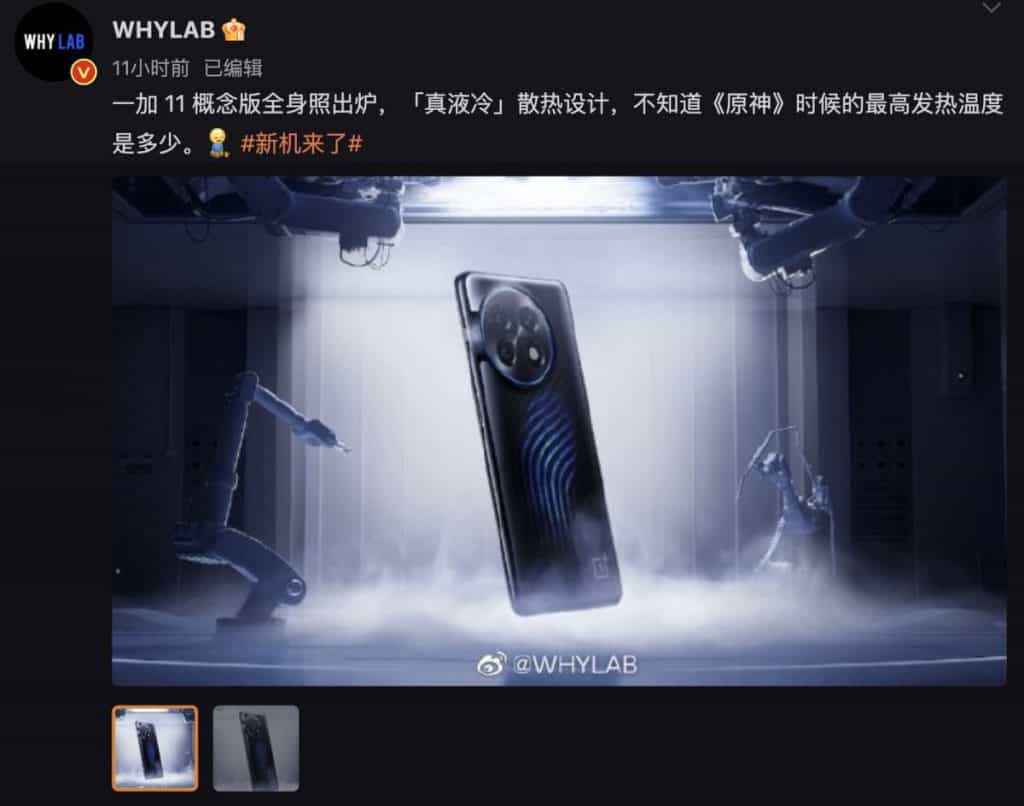This week is Mobile World Congress, which means a foray into the untamed world of concept phones. Typically, flexible display gadgets never see the light of day, but this year OnePlus has the “OnePlus 11 Concept” smartphone. “Active CryoFlux” is the name of its liquid cooling system. We will attempt to analyze this, but our first red flag is that OnePlus provides little specifics.
It’s worth remembering that OnePlus has produced a number of concept phones that have had no significant impact on the company’s consumer products. One phone covered its camera lenses with electrochromic glass, rendering them invisible when not in use. The hue of another phone would change. Neither functionality has ever been implemented in a consumer phone.
According to OnePlus’s press release, the system comprises “At its core is a piezoelectric ceramic micropump coupled to pipelines between an upper and lower diaphragm. The micropump occupies less than 0.2 cm2, allowing cooling fluids to flow around the pipelines without considerably increasing the weight and thickness of the OnePlus 11 Concept.”
Those sophisticated blue LEDs on the back appear to be part of the cooling system and are not merely decorative. The press announcement states, “The transparent back provides a captivating view of the Active CryoFlux pipes in operation,” which are also illuminated. Also, according to OnePlus, “Active CryoFlux liquid swirls around the camera like a halo,” so anything blue is cooling liquid.
As for the actual effects of this system, OnePlus claims, “In laboratory tests, Active CryoFlux has been demonstrated to reduce a phone’s temperature when gaming by up to 2.1°C, boosting a game’s frame rate by 3-4 degrees, or by 1.6°C during charging, reducing charging time by 30-45 seconds.”
These figures are not especially impressive. As a result of heat, mobile devices typically “cool” themselves by decreasing their speed. The OnePlus press release statement measures frame rate in “degrees”—I’m very certain they mean “frames”—and 3 to 4 frames is often the error range for a benchmark.
Phones are extremely heat limited, and their passive cooling methods typically include slowing down to prevent overheating. A phone with adequate cooling would be significantly faster, especially for longer tasks like gaming.
The liquid does not appear to move, which would explain why OnePlus’s cooling performance is so poor. Attaching a water block to a hot component, such as the CPU or GPU, then heating the liquid and transferring it to something that will cool it, typically a radiator with fans behind it, is how water cooling works in personal computers.
Is this a reproduction of the genuine cooling loop? Other than passive cooling, the phone has no visible means to cool the liquid once it has become hot. There is neither a fan nor a radiator or any other form of cooling apparatus, unlike on certain smartphones.
The rear of the phone appears to contain a small amount of liquid at the same temperature, which OnePlus believes will dissipate heat as it flows around the surface. It probably doesn’t help that the cooling system is placed between two insulating glass panels inside the phone. Moreover, OnePlus does not state specifically that the liquid cooling is coupled to the SoC via a water block. It is unclear which components are being cooled.
Eventually, a marketer opted to label the phone’s design as “Glass Unibody,” which sounds like a nightmare for phone durability. This claim appears to be little more than marketing: There is still a metal frame surrounding the phone, and the “unibody” depicted by OnePlus appears to be a standard rear glass panel. A true “unibody” would consist of the back and frame of the phone being constructed from a single component, with the internal electronics mounted to that piece. Luckily, OnePlus did not employ a really competent glassblower, and there does not appear to be significantly more glass than on a typical OnePlus 11.
Related Articles:
Google, Microsoft and 15 other technology companies headed by Indian-origin executives
Snapchat Is Releasing Its Own Artificial Intelligence Chatbot Powered by ChatGPT.
Apple 217 XDG Team Is Developing More Than a Glucose Monitor










